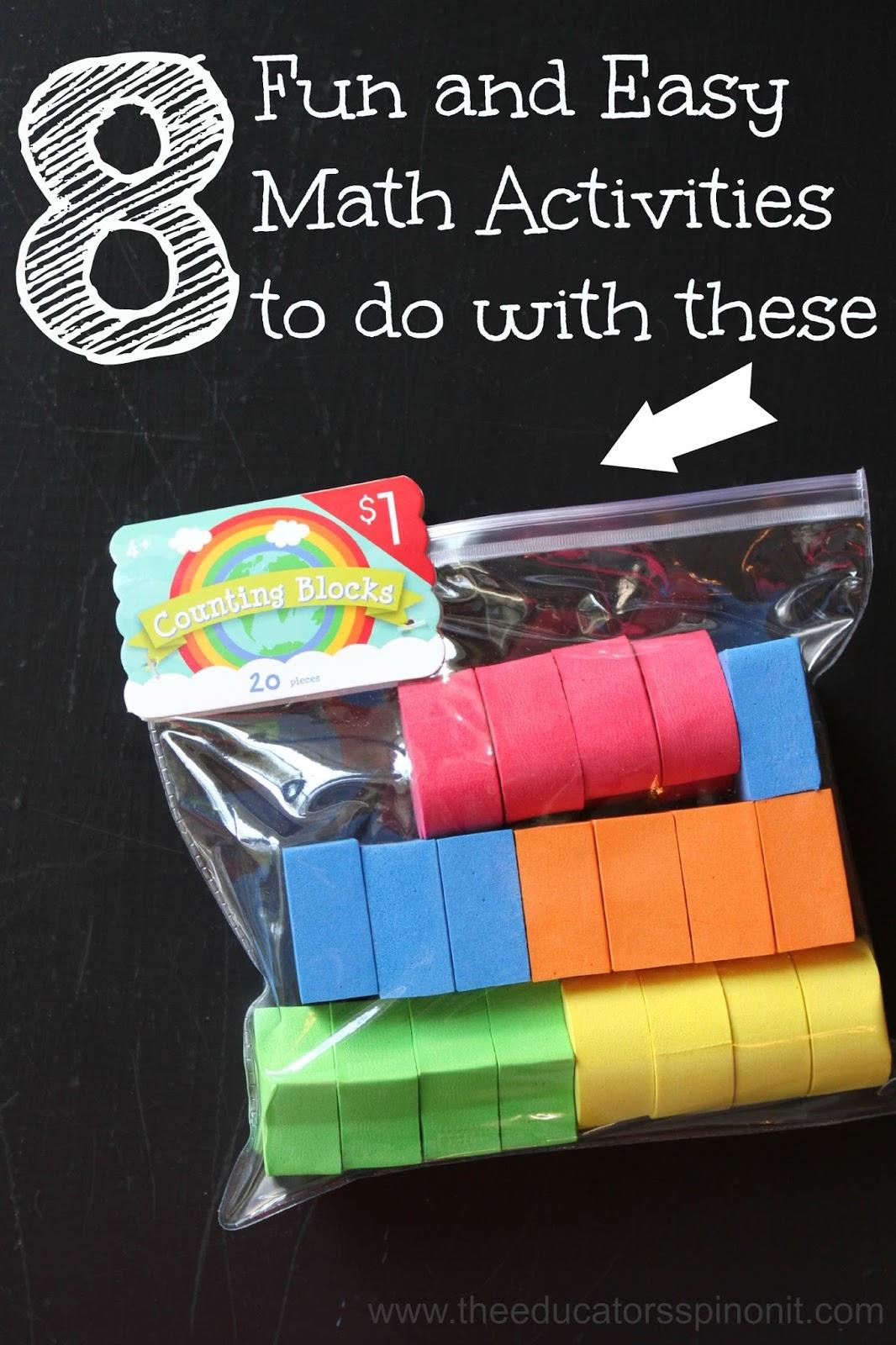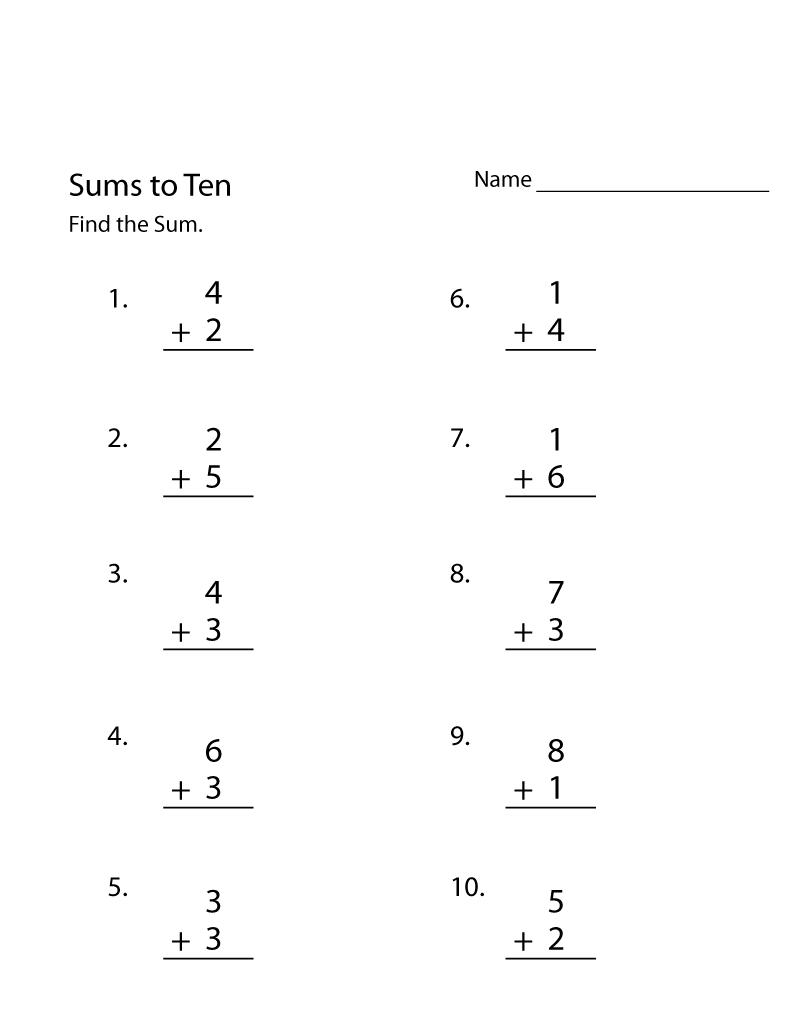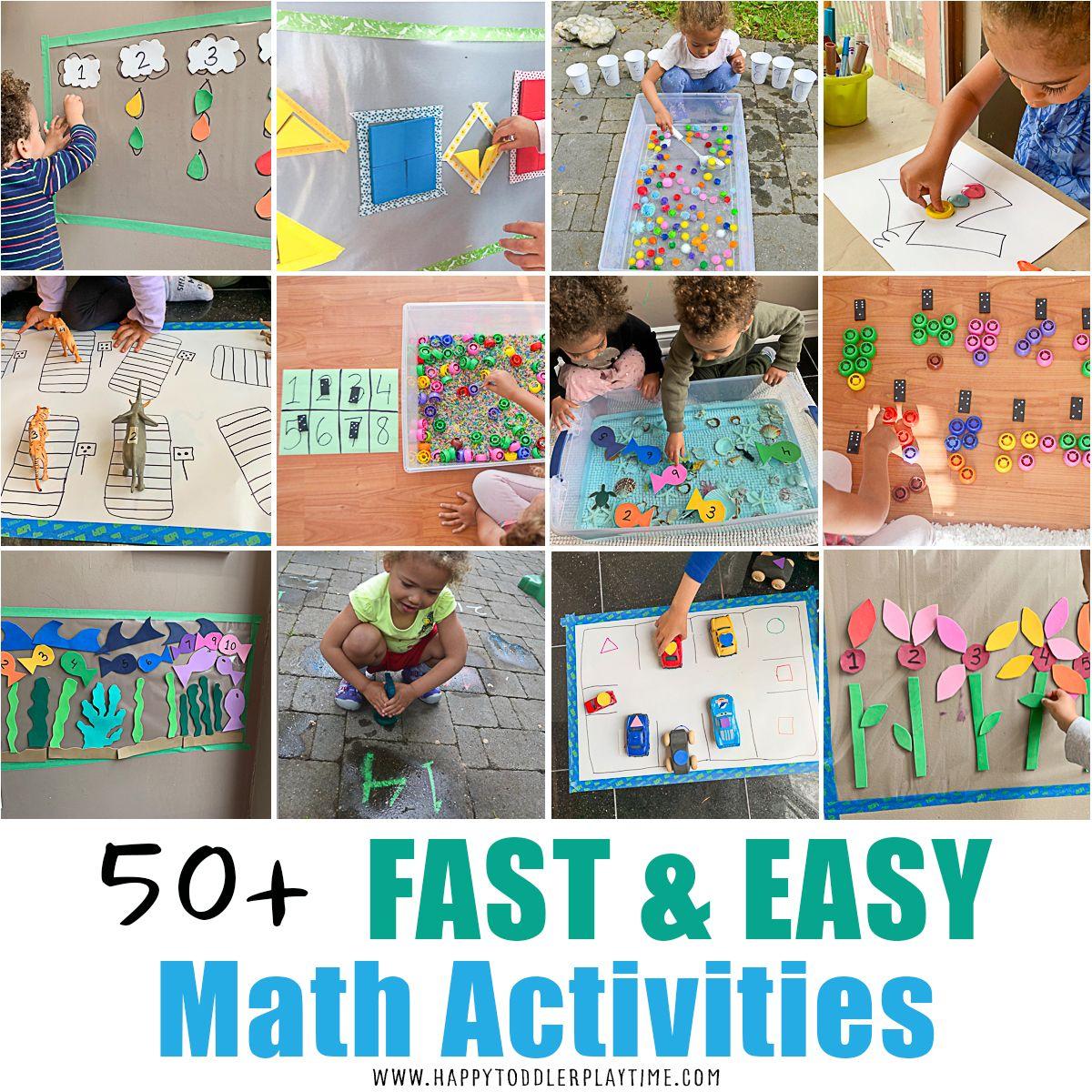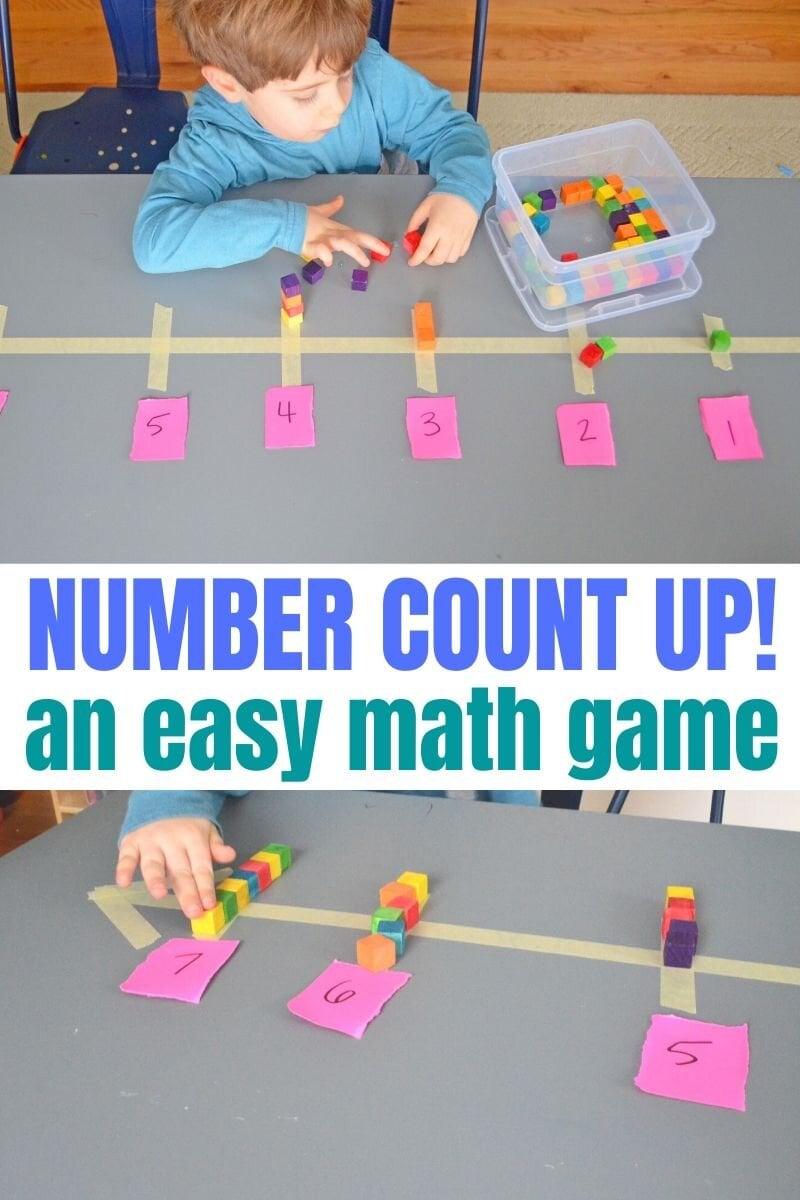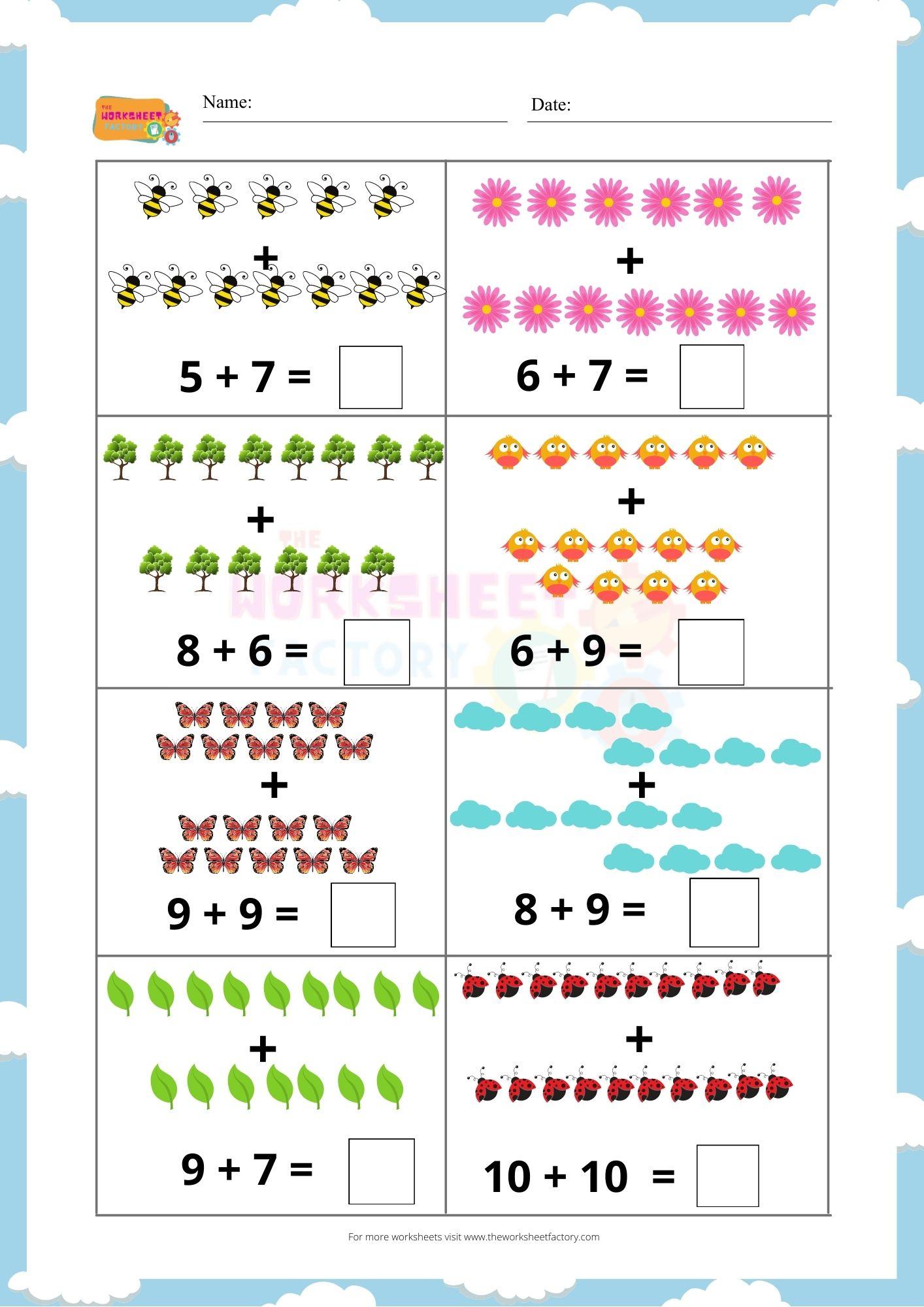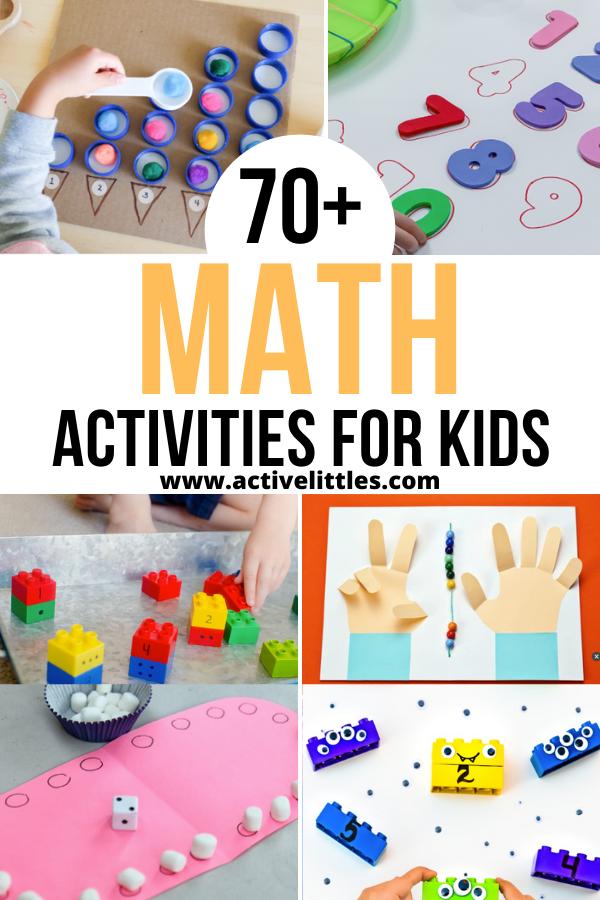
Here are 70 math activities for toddlers, preschoolers, and kids that are engaging and active:
Toddlers (1-3 years)
1. Number Tracing: Use play dough or sand to practice tracing numbers on a flat surface.
2. Counting Games: Play "What's Missing?" game by laying out a few toys and asking "Where's the ball?" and counting the remaining toys.
3. Shape Sorting: Provide a basket with different shapes (e.g., squares, circles, triangles) and ask the toddler to sort them.
4. Counting Objects: Counting blocks, toys, or other objects, saying the number out loud ("One block, two blocks, three blocks…").
5. Memory Match: Create a simple memory game with number cards (0-3).
6. Number Counting Books: Read number count books and ask the toddler to point to the numbers.
7. Counting Steps: Count the steps when walking with the toddler.
8. Food Counting: Count the number of spoons when having a snack or meal.
9. Number Patterns: Create a simple pattern using blocks or toys (e.g., "One block, two blocks, three blocks…").
10. Counting Songs: Sing counting songs with hand gestures (e.g., "Five Little Monkeys Jumping on the Bed").
Preschoolers (3-5 years)
11. Pattern Blocks: Use wooden or plastic blocks to create patterns and ask the child to extend them.
12. Counting Money: Use play money to practice counting money (e.g., "How much money do you have?").
13. Measurement Games: Play games like "How Tall Can You Be?" by measuring the child's height.
14. Counting Time: Tell the child it's time to do something (e.g., "It's 10 minutes until snack time!") and have them count down.
15. Money Counters: Create a simple "store" with play money and ask the child to count the money.
16. Shape Patterns: Create a pattern using shapes (e.g., "Triangle, square, triangle, square…") and ask the child to continue it.
17. Counting Clothes: Practice counting clothes (e.g., "How many socks do you have?").
18. Number Bingo: Play simple bingo games with number cards (0-10).
19. Counting Steps (Walking): Count the steps when walking with the child.
20. Counting Books: Read number count books and ask the child to point to the numbers.
21. Math Centers: Create math centers with different activities, such as counting, shapes, and patterns.
Kids (5-8 years)
22. Math Puzzles: Solve simple math puzzles, such as "What's the Missing Number?".
23. Number Sentences: Write simple number sentences (e.g., "2 + 2 = ?") and ask the child to solve them.
24. Measurement Games: Play games like "How Long Can You Stretch?" by measuring the child's arm span.
25. Counting Money (Cents): Practice counting money in cents (e.g., "How many pennies do you have?").
26. Pattern Blocks (Advanced): Use more complex patterns with blocks or toys.
27. Counting Calories: Practice counting calories in foods (e.g., "How many calories do you have in your snack bag?").
28. Math Scavenger Hunt: Create a scavenger hunt with math problems to solve.
29. Counting Time (Alarms): Use kitchen timers to practice counting time (e.g., "How many minutes until the timer goes off?").
30. Money Counters (Advanced): Practice counting money with more complex calculations (e.g., "How much money do you have if you have 3 $10 bills and 2 $5 bills?").
31. Shape Patterns (Patterns with More Shapes): Create patterns with more complex shapes (e.g., "Triangle, square, hexagon, triangle, square…").
32. Counting Collections: Ask the child to count collections of items (e.g., "How many pencils do you have?").
33. Math Board Games: Play simple math board games, such as "Math War" or "Addition Bingo".
34. Counting Books (Advanced): Read more complex number count books and ask the child to point to the numbers.
35. Math Centers (Advanced): Create more complex math centers with different activities, such as fractions, decimals, and percentages.
Additional Activities
36. Math Games with Friends: Play math games with friends or family members, such as "What's the Missing Number?".
37. Cooking and Baking: Practice measurement and fractions while cooking and baking with the child.
38. Outdoor Games: Play outdoor games that involve math, such as "How Far Can You Throw a Ball?".
39. Computer Games: Play math computer games or apps, such as "Math Games" or "Math Blaster".
40. Real-Life Math: Practice math in real-life situations, such as counting change or measuring ingredients.
41. Music and Movement: Create a math-themed dance routine or sing math-themed songs.
42. Story Problems: Create simple story problems for the child to solve (e.g., "Tom has 3 toys, and he gives 1 to his friend. How many toys does Tom have now?").
43. Visual Aids: Use visual aids, such as number lines or hundreds charts, to help the child understand math concepts.
44. Math Journals: Ask the child to keep a math journal to record their math problems and solutions.
45. Math Art: Create math-inspired art projects, such as creating geometric shapes with blocks or drawing numbers.
46. Cooking Measurement: Practice measurement in cooking, such as measuring out ingredients.
47. Shopping: Practice counting and calculating change when shopping with the child.
48. Fitness and Math: Create a math-themed workout routine, such as counting jump squats.
49. Math Poetry: Write math-themed poetry or rap lyrics.
50. Math in Real-Life Situations: Practice math in real-life situations, such as measuring the area of a room or calculating the cost of groceries.
Additional Fun Activities
51. Math Scavenger Hunt (Nature): Create a scavenger hunt with math problems to solve in nature.
52. Math Day: Declare a "Math Day" and create activities and games with a math theme.
53. Dinner and Math: Practice counting and calculating change at dinner time.
54. Math Games with Cards: Play math games with cards, such as "What's the Missing Number?".
55. Math in the News: Discuss how math is used in real-life situations, such as science, sports, or finance.
56. Math in Cooking: Practice measurement and fractions while cooking and baking.
57. Math with Music: Create math-themed music or sing math-themed songs.
58. Math with Movies: Watch math-themed movies or videos (e.g., "Mathematical Miracles").
59. Math with Games: Play math games, such as "Math War" or "Addition Bingo".
60. Math with Friends: Practice math with friends or family members.
61. Math with Storytelling: Create math-themed stories or stories with math concepts.
62. Math with Art: Create math-inspired art projects, such as drawing numbers or creating geometric shapes with blocks.
63. Math with Science: Practice math in science, such as measuring the area of a lab or calculating the cost of supplies.
64. Math with Sports: Practice math with sports, such as counting points or calculating the distance of a throw.
65. Math with Finance: Practice counting and calculating change and making simple financial decisions.
66. Math with Games and Puzzles: Play math games and puzzles, such as Sudoku or word problems.
67. Math with Literature: Read math-themed literature, such as "The Greedy Triangle" or "Ten Black Dots".
68. Math with Technology: Practice math with technology, such as solving math problems on a tablet or calculator.
69. Math with Real-Life Situations: Practice math in real-life situations, such as measuring the area of a room or calculating the cost of groceries.
70. Math with Creativity: Practice math with creativity, such as creating math-inspired art or writing math-themed poetry.
These activities can be adapted to fit the needs and abilities of your child. Remember to make math fun and engaging, and to encourage your child to ask questions and explore math concepts at their own pace.
